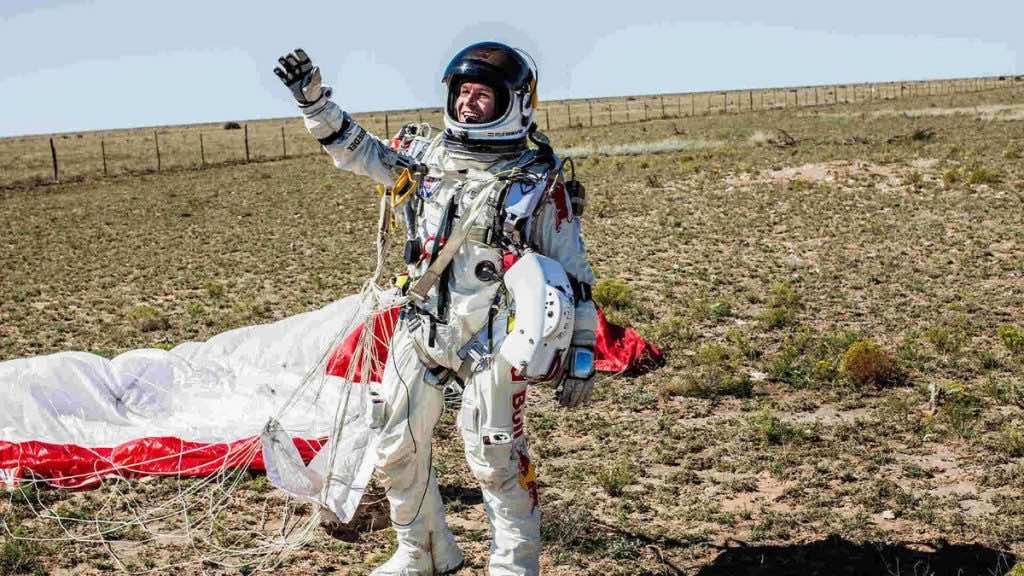You might remember the historic free-fall that happened ten years ago performed by the Austrian skydiver and daredevil Felix Baumgartner. It was conducted on Oct 14, 2012, and broke the record for the highest-ever freefall by a human being from the whopping height of 119,431 feet (36,403 m), breaking the sound barrier in the process. Now, after a period of ten years, Red Bull demonstrated the never-before-seen visuals of this mission to commemorate the tenth anniversary of this renowned mission in a documentary named “Space Jump”.
The mission was conducted by the “Red Bull Stratos” and Baumgartner jumped along the helium balloon at the height of about 127,852 feet (38,969 m) from space. Not to mention, he broke the sound barrier at Mach 1.25 which has never been achieved before by a human being. Baumgartner brought the parachute into action at a height of about 8,400 feet (2,560 m) and hence, managed to land on the ground in a safe manner. Today, when we talk about this memorable mission, it brings a lot of memories back that how people were watching the whole endeavor on live television and applauding the man. It was, indeed, one of its kind mission that will be cherished forever.
Coupled with this, it should be noted that the whole mission took a lot more time of about several years rather than just 24 months as has been anticipated previously. While talking about the project details, Baumgartner said, “We thought, we’re going to build the capsule, build the pressure suit, practice for a while, and then we go all the way up to the stratosphere and come back to Earth at supersonic speed.” On the other hand, Art Thompson, technical project director, said, “The effect that it had globally on education and on the next generation wanting to become aerospace or flight test engineers was huge. Additionally, the life support system that we designed on the capsule, we used that technology and data to change the configuration for life support for [high altitude jets including] the U-2.”
When Baumgartner was asked about the details of the mission, he said, “The sky becomes really black. You’ve left the atmosphere behind and are in the stratosphere. It’s a very unforgiving, hostile environment. Will you spin? Can you stop it? What will happen when you go supersonic? The view is one thing, all of the unanswered questions another. So you step off, accelerate like crazy into the unknown and see what’s going to happen.”
A good thing was Baumgartner was an experienced professional so he easily regained consciousness after spinning continuously for several hours and that too at an exuberant speed. He said, “Once I opened my parachute and opened my visor, this was the first moment after seven hours where I was breathing outside air. I was reconnected to the outside world, and that was a very happy moment. The only thing that I didn’t know when I landed was: did I break the speed of sound? Because, once you’re in freefall, you know you’re fast, but you have absolutely no indication of how fast you actually are.”

